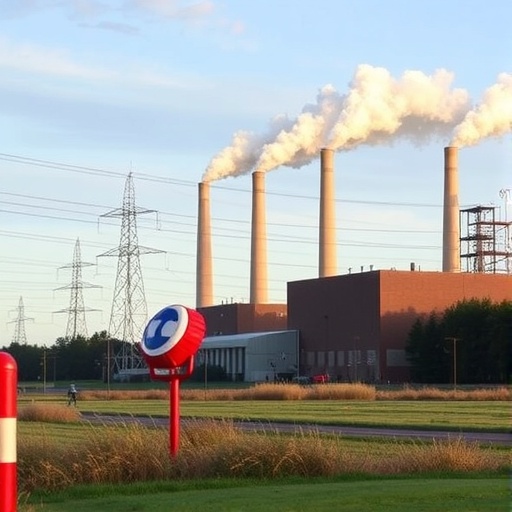In the ongoing battle against climate change, the pulp and paper industry finds itself at a crucial crossroads. A recent study has revealed that transitioning from conventional natural gas power to electric and biomass energy sources—combined with enhanced energy efficiency techniques—could pave the way for pulp and paper mills to achieve zero net emissions. The study conducted by researchers at North Carolina State University presents a novel approach by employing a comprehensive simulation that breaks down different mill configurations and their environmental impacts.
The research categorizes mills based on two pivotal characteristics: the type of fibers they utilize—virgin or recycled—and whether they operate as integrated units. Virgin mills derive their raw materials from fresh wood, whereas recycled mills focus on reprocessing existing fibers. An integrated mill possesses the capability to convert raw wood into pulp and paper on-site. Conversely, non-integrated mills depend on externally sourced pulp that has already been processed, highlighting a significant operational difference. This distinction is crucial for understanding the varying degrees of emissions output and energy consumption across the industry.
Lokendra Pal, a professor at NC State and co-author of the study, emphasized the importance of this multifaceted approach. “Most previous research has narrowed the focus to single products or specific mill types,” he stated. “By simulating entire mill operations across multiple configurations, we can better understand the intricate relationships and trade-offs that dictate efficiency and emissions.”
The study outlines that virgin integrated mills are responsible for 30% of the United States’ annual paper production, simultaneously contributing to 33% of greenhouse gas emissions from the sector. Despite having the capability to generate between 80% and 90% of their energy from on-site waste wood, these mills still rely on natural gas boilers for the remainder of their energy needs. In contrast, non-integrated mills are heavily reliant on gas boilers and purchased electricity, with no on-site energy production methods, placing them at a significant emissions disadvantage.
One of the most compelling findings of the research revealed that electric-powered boilers could enable these mills to diminish their emissions by up to 61%. However, Pal cautions that merely transitioning to electric power is not sufficient. The efficacy of this transition hinges on the energy sources powering the electrical grid. If fossil fuels still dominate electricity generation, emissions reductions may be rendered ineffective. “The shift to a cleaner electrical grid by 2050 is crucial,” Pal explained. “It could create a scenario where electric boilers become significantly more environmentally friendly than continuing to depend on natural gas.”
In addition to exploring shifts to electric power, researchers also investigated the potential benefits of utilizing more efficient dewatering processes. Traditional thermal drying methods consume extensive amounts of energy, making it the most energy-intensive segment of the paper manufacturing process. The study suggests that employing dewatering technologies, such as enzymatic treatments and mechanical presses, could significantly alleviate the water content in pulp before it enters the thermal drying phase, leading to substantial energy savings.
Maria E. Gonzalez, the lead author and a Ph.D. student in the Department of Forest Biomaterials at NC State, underscored the importance of this energy-efficient approach. “Our analysis found that for each 1% of water removed during pressing, there was a corresponding increase of 3% in energy efficiency for the overall papermaking process,” she shared. However, these advancements are not without trade-offs, as enhanced dewatering could result in a decrease in steam production, which is essential for powering turbines used in electricity generation.
The researchers also examined the use of low-carbon alternatives, specifically the incorporation of biomass fuels. The study revealed that substituting fossil fuels with waste wood in boilers can lead to considerable reductions in emissions. The effectiveness of this biomass approach varied by mill type, with integrated mills benefitting significantly, especially when electricity prices surpassed those of natural gas.
Overall, the study concluded that a combined approach utilizing electric power, efficient dewatering, and sustainable biomass fuel could considerably reduce emissions across various mill configurations. This triad of strategies presents a viable roadmap for the pulp and paper industry, showcasing a path toward a sustainable future.
However, Pal noted the complexities involved, stating, “While there are significant opportunities for emissions reductions, the interdependencies of mill operations require a careful, customized strategy for each facility.” He advocates for a balanced, case-specific approach toward decarbonization, acknowledging the unique operational parameters and challenges of each mill.
The comprehensive study has been published in the Journal of Cleaner Production, setting the stage for future research aimed at further reducing the environmental impact of the pulp and paper sector while ensuring operational viability. This pivotal work not only sheds light on the pressing challenges within the industry but also highlights the potential pathways toward achieving long-term sustainability.
As the world grapples with the pressing need to reduce carbon emissions and tackle climate change substantially, the pulp and paper industry appears poised to play a critical role in this effort. By leveraging new technologies and embracing renewable energy sources, these facilities can transform into leaders in environmental stewardship, thereby contributing positively to a greener planet.
Subject of Research: Decarbonization strategies within the pulp and paper industry
Article Title: Electric power could bring paper mills to net zero emissions
News Publication Date: 1-Sep-2025
Web References: Access the study
References: Journal of Cleaner Production
Image Credits: North Carolina State University
Keywords
Decarbonization, Pulp and Paper Industry, Renewable Energy, Electric Boilers, Energy Efficiency, Biomass, Greenhouse Gas Emissions, Sustainability, NC State University




